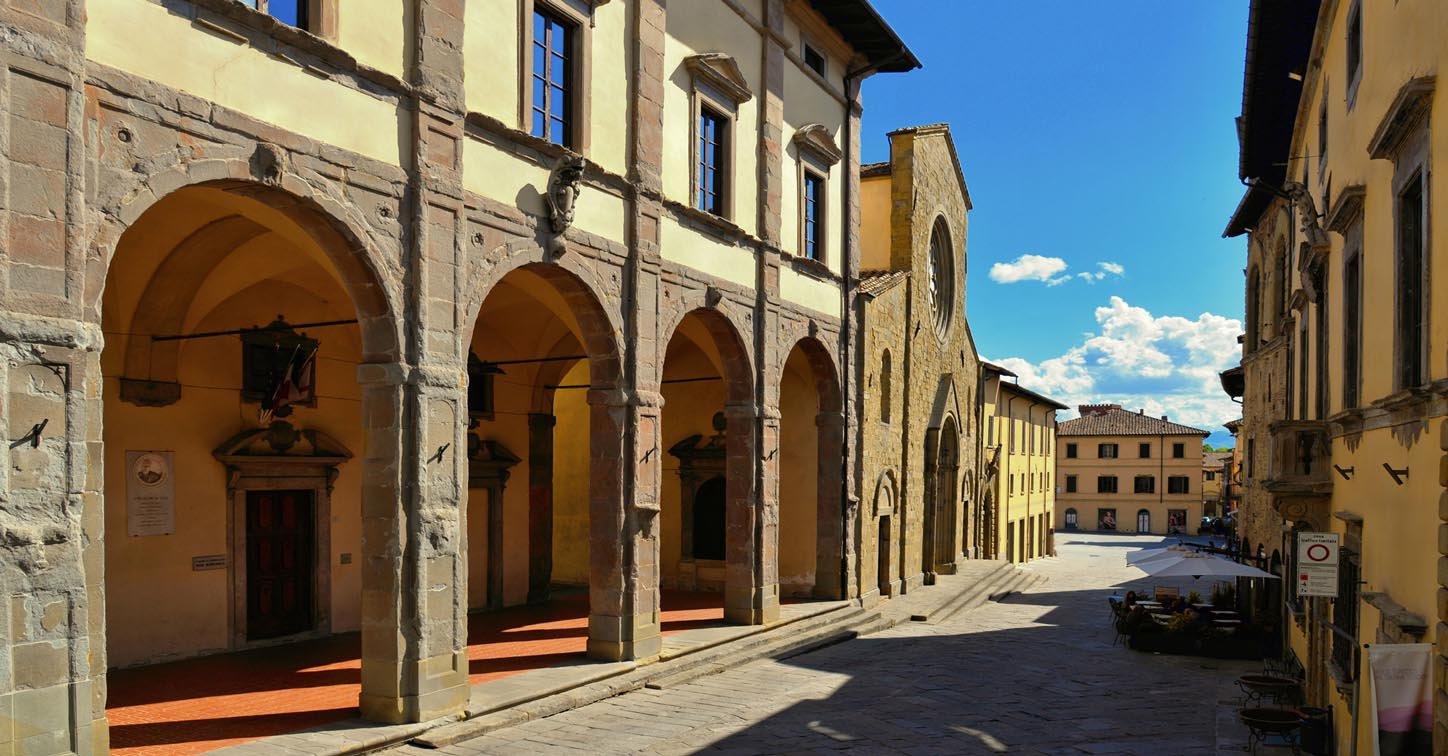
08 Oct Piero della Francesca, Art History Road Trip IV: San Sepolcro

Palazzo delle Laudi and Cathedral of San Giovanni Evangelista
Piero della Francesco, Art History Road Trip IV: San Sepolcro
San Sepolcro was made a city by the Medici Pope, Leo X, but it used to sport the prefix ‘Borgo’, meaning village or hamlet and it still has a small town vibe. We arrived in time for coffee, strolled around until lunch and were the first through the doors when the museum opened in the afternoon. Today the town is home to the Buitoni pasta factory but its real significance is as the birthplace of Piero della Francesca. The fresco of the resurrected Christ that Piero painted on the wall of the townhall is to be seen reproduced everywhere in the central streets around the museum and art gallery.
Spike, who came here many years ago whilst working on a film about Piero, told me that ‘Resurrection’ was described by the English writer Aldous Huxley as ‘the greatest painting in the world’. It’s certainly an arresting image; the figure of Christ has a stern expression and a powerful pose, about to step out of his tomb.
The building is now the Civic Museum and we handed over our euros to get a closer look.

Resurrection of Christ, Piero dell Francesca, 1458
The picture is placed quite high on the wall and it gave Piero an opportunity to employ his mathematical prowess again. I like this picture because of the simple power of its composition which is locked together in a triangle formed by the face of Christ and the line of the top of his sarcophagus. Experts have demonstrated how he used geometry to paint Christs gaze so it would best pierce your own eyeline if you were kneeling at a certain distance from the wall. I didn’t find such an exact arrangement was necessary to admire the work.
The museum is also home to another significant work by Piero, the Madonna of the Misericordia.

The Madonna of the Misericordia by Piero dell Francesca, 1445.
The Madonna stands with her arms spread, supporting the beautifully rendered (pipe) folds of her cloak, protecting the townsfolk who kneel in prayer beneath. Stylistically this picture reflects the tastes of the people who commissioned it; the Compagnia della Misericordia, a confraternity of charitable do-gooders, who wanted to emphasize the good fortune of the citizens. The archaic device where the most important figure, the Madonna, is made much larger than the other characters, and the gold leaf background were distinctly old fashioned. Piero rescues the work with his portrayal of the group gathered under her cloak who are bang up to date with three-dimensional modelling in the latest Renaissance manner.
The contract for the picture allowed a generous three years for completion but Piero took seventeen – not because he was slow or lazy but almost certainly because he was continually in demand and therefore very busy.
We left a little after four. The drive over the mountains to Urbino is notoriously taxing, Huxley’s bus took seven hours, in 1925, so we wanted to get on the road in good time. We were also fired up by the prospect of finally seeing the goal of our trip.
Aldous Huxley’s essay ‘The Best Picture’ is worth the few minutes it takes to read.
You can find it here: web.archive.org
Fold of the week, the Zig Zag Fold
Pipe folds change direction in zig zag folds, but not as much as in half lock folds shown last week. Gothic artists particularly favoured the zig zag and the half lock fold. These folds are a very effective way of moving the viewers’ eye up and down a form. This is their strength, more so than their ability to describe a form. The eye of the fold is where it squeezes in and changes direction.

Sculptural zig zag folds and zig zag folds on a tubular form
I’m saving Urbino for next week. I hope you have a good one.
Fiona


